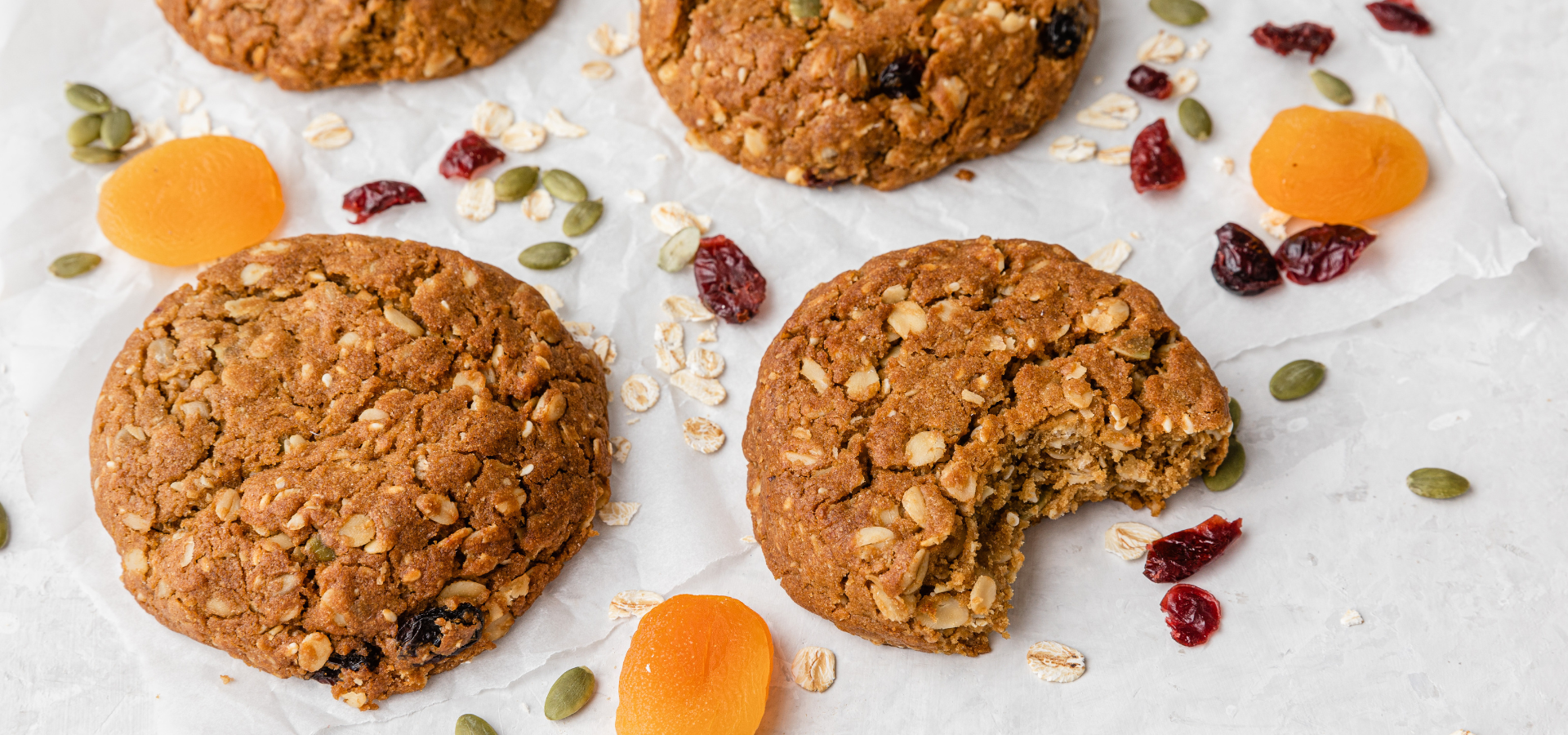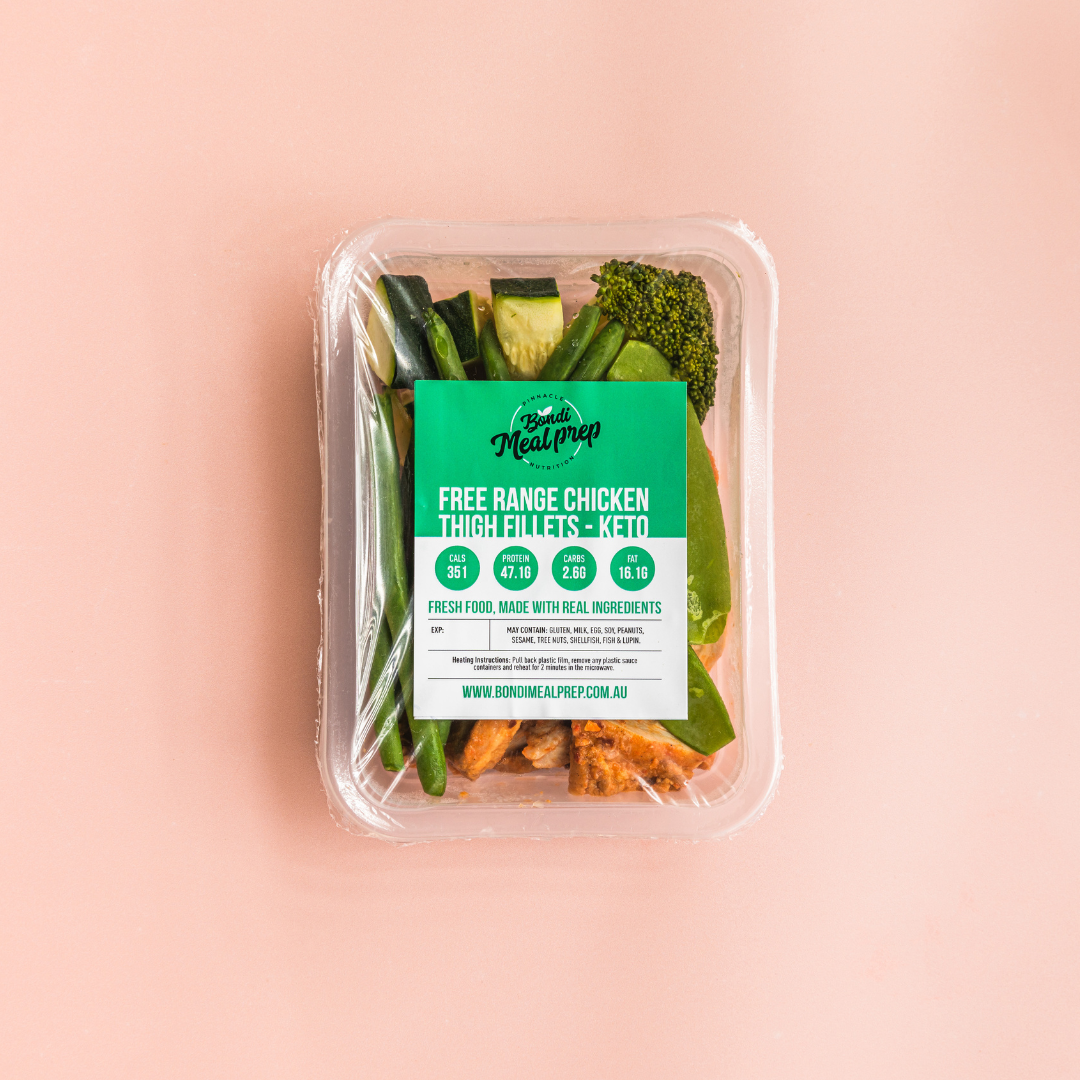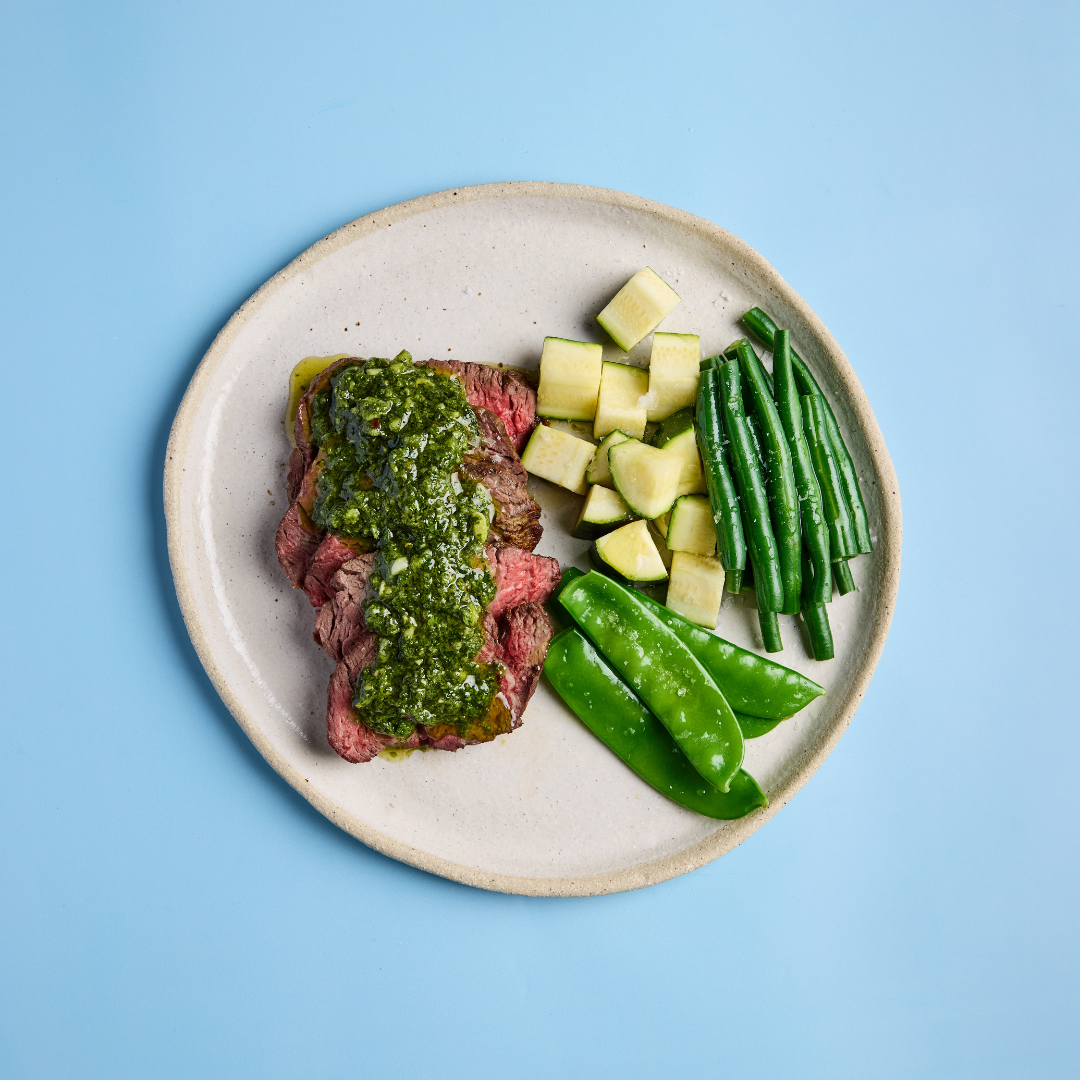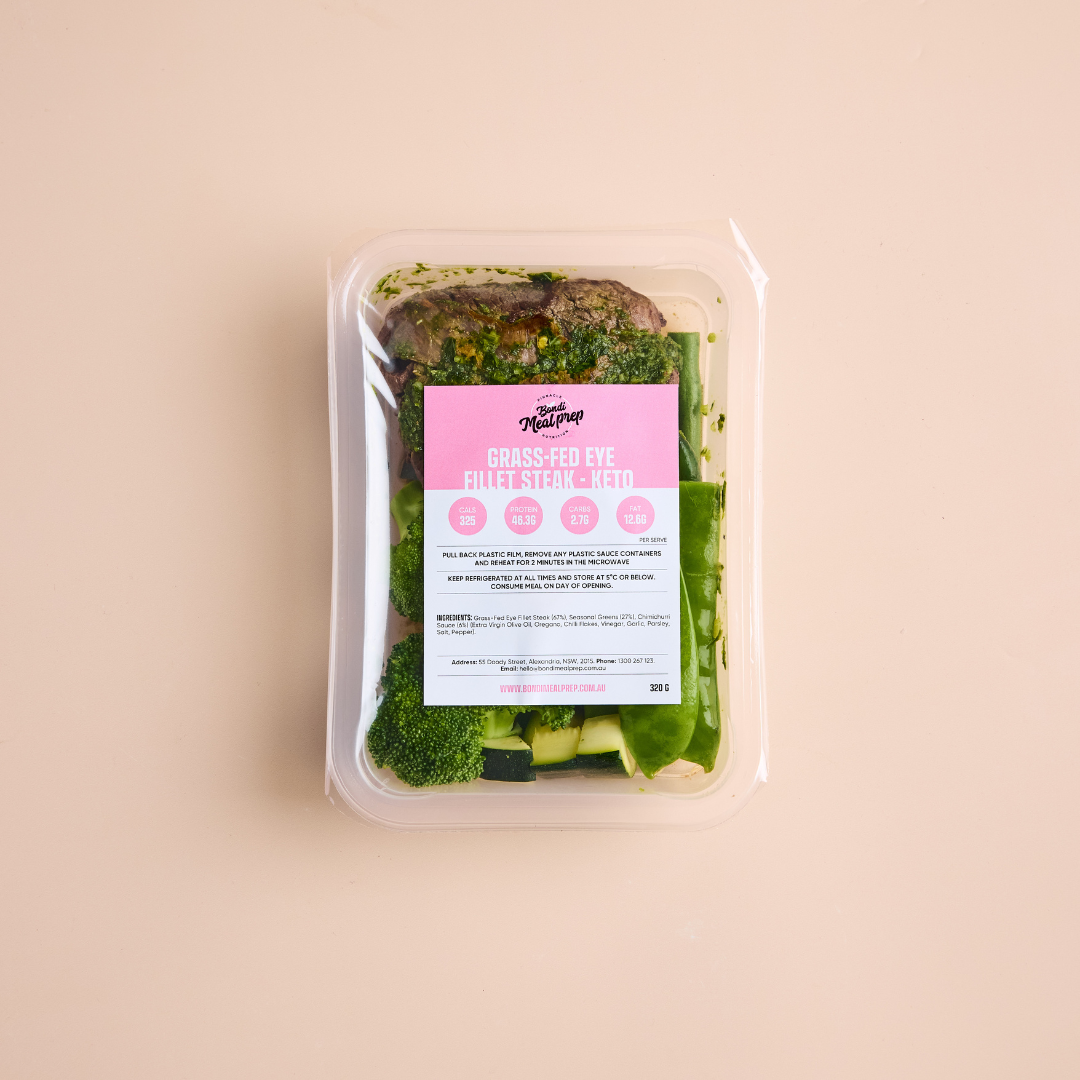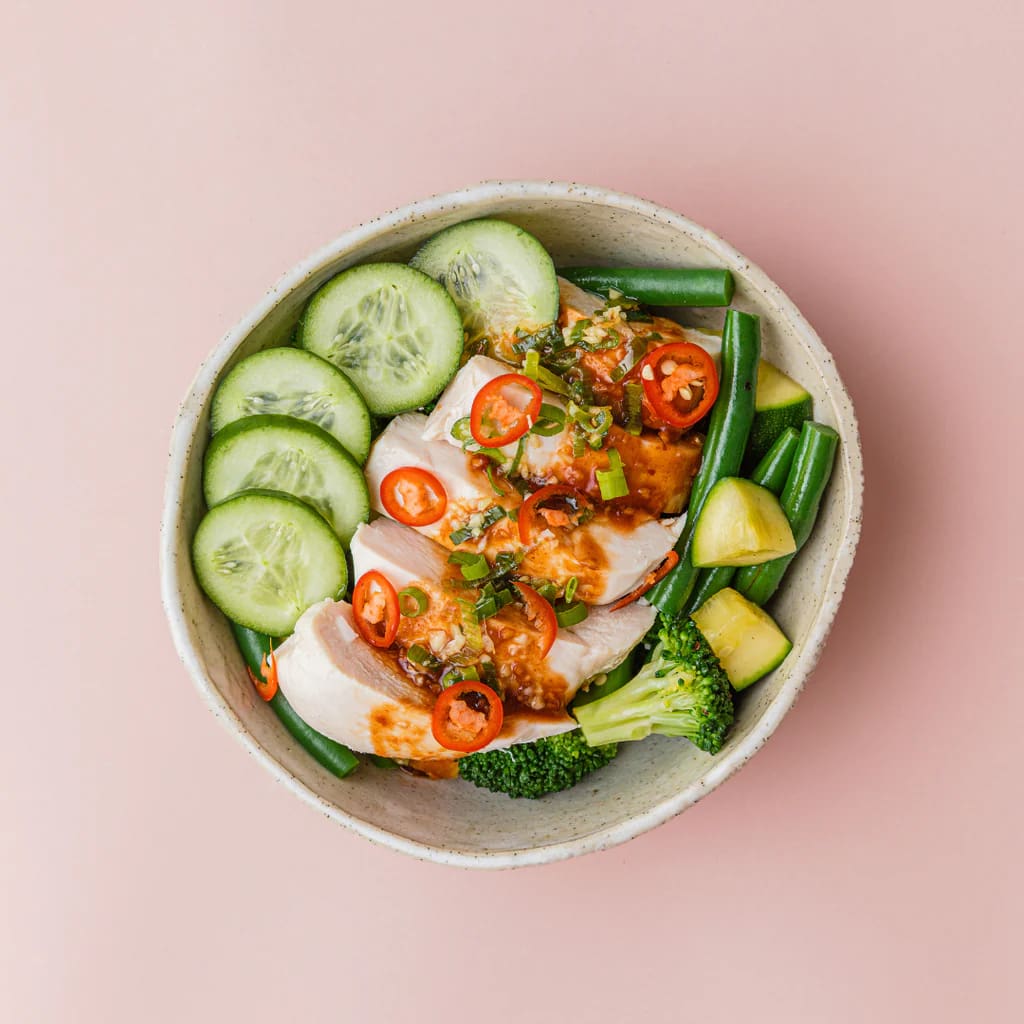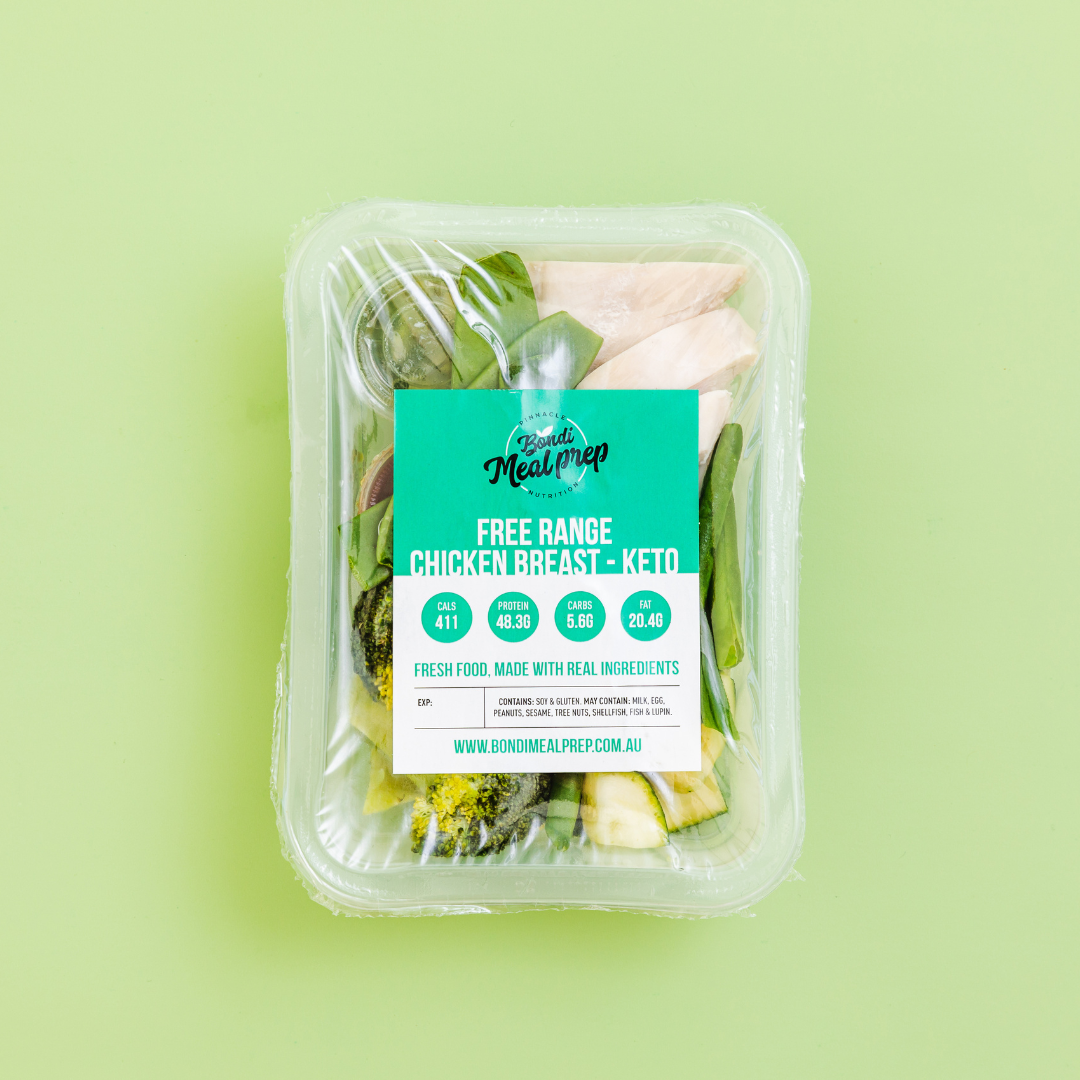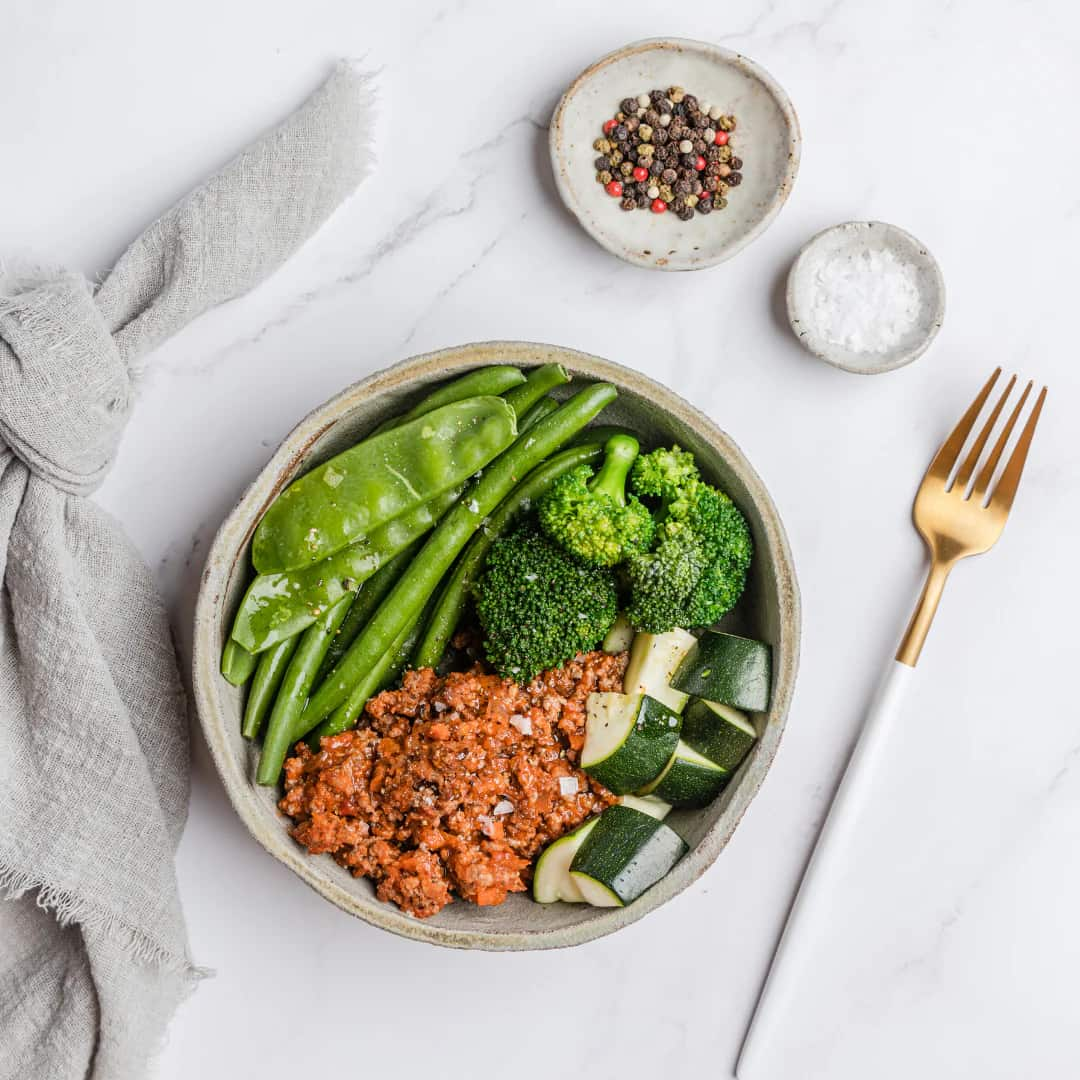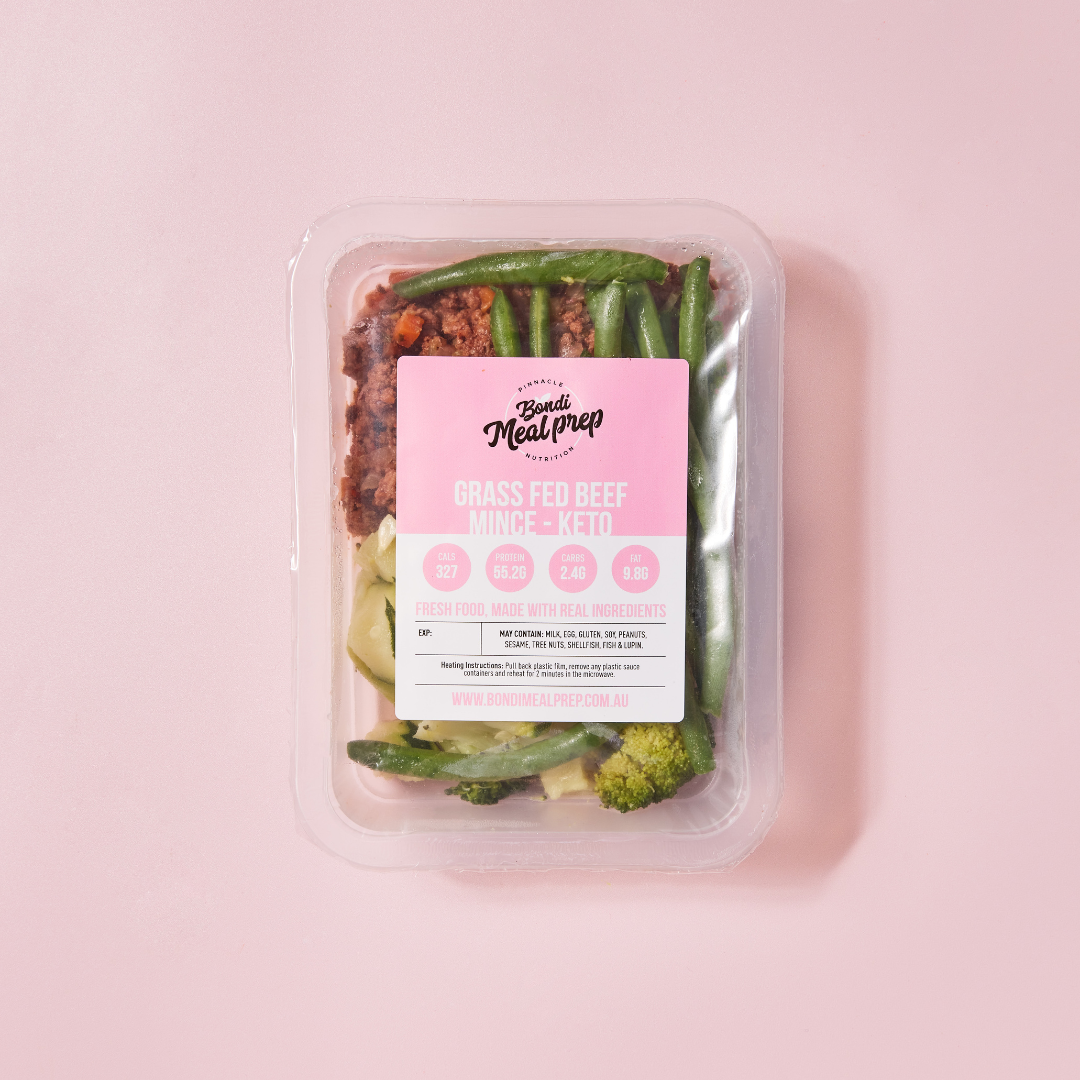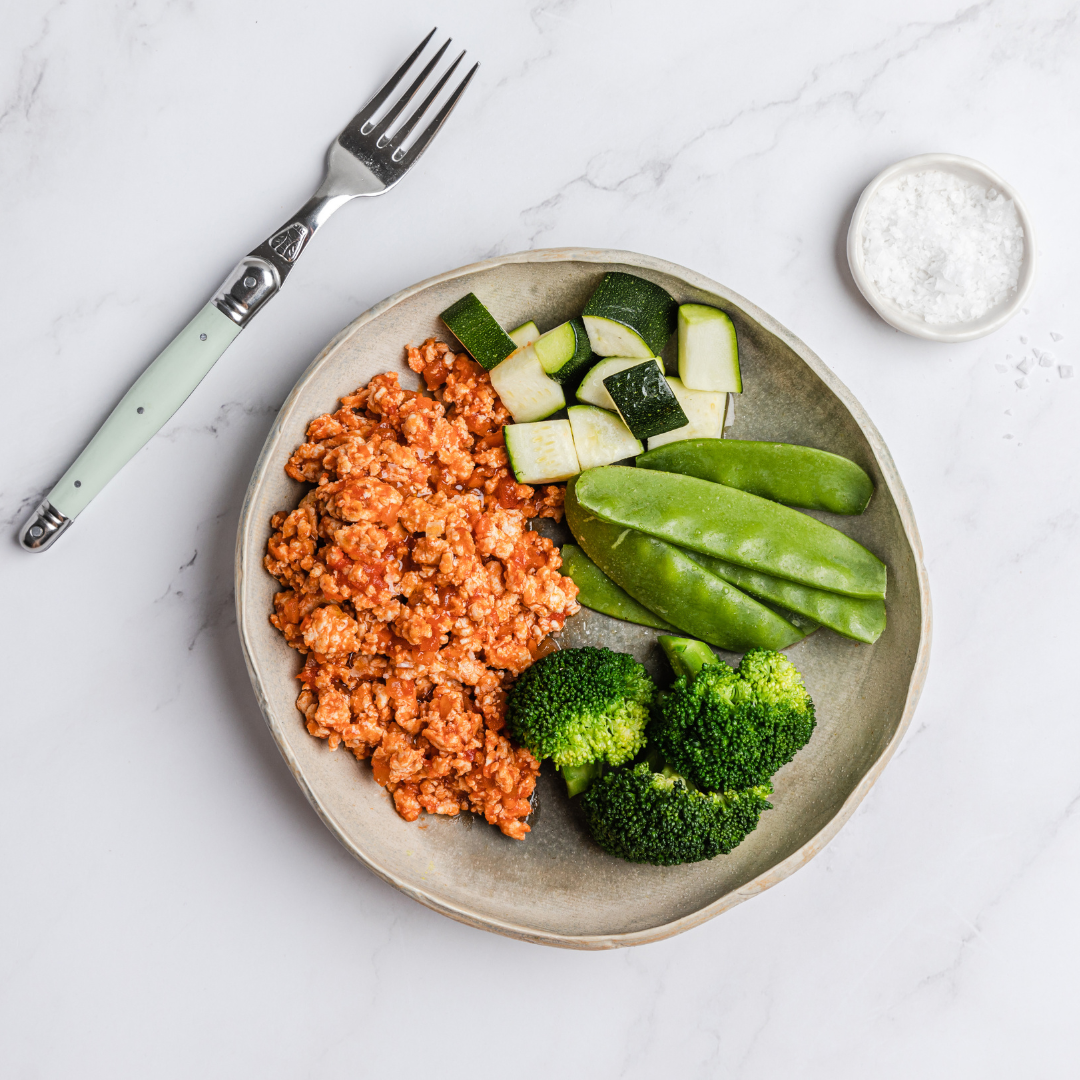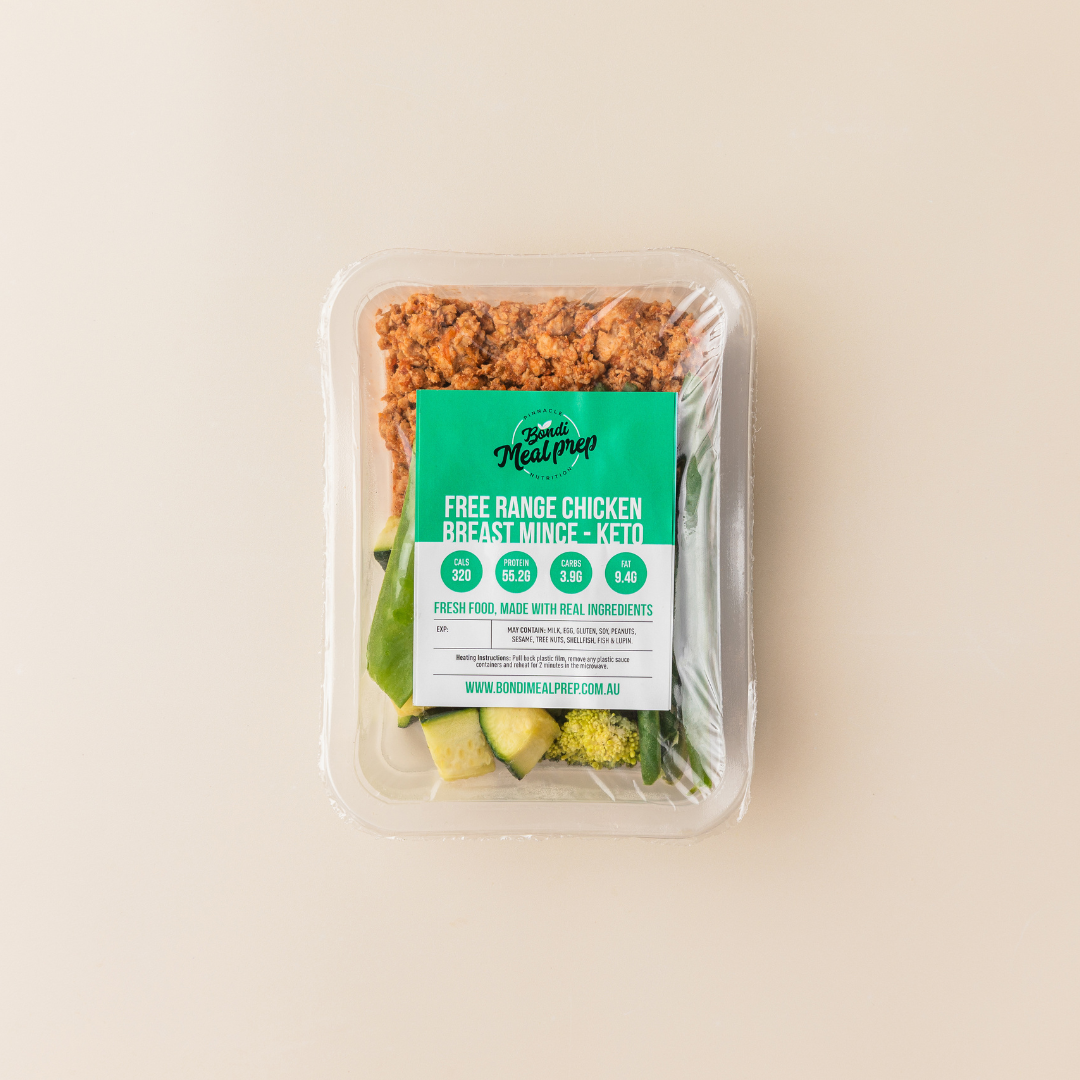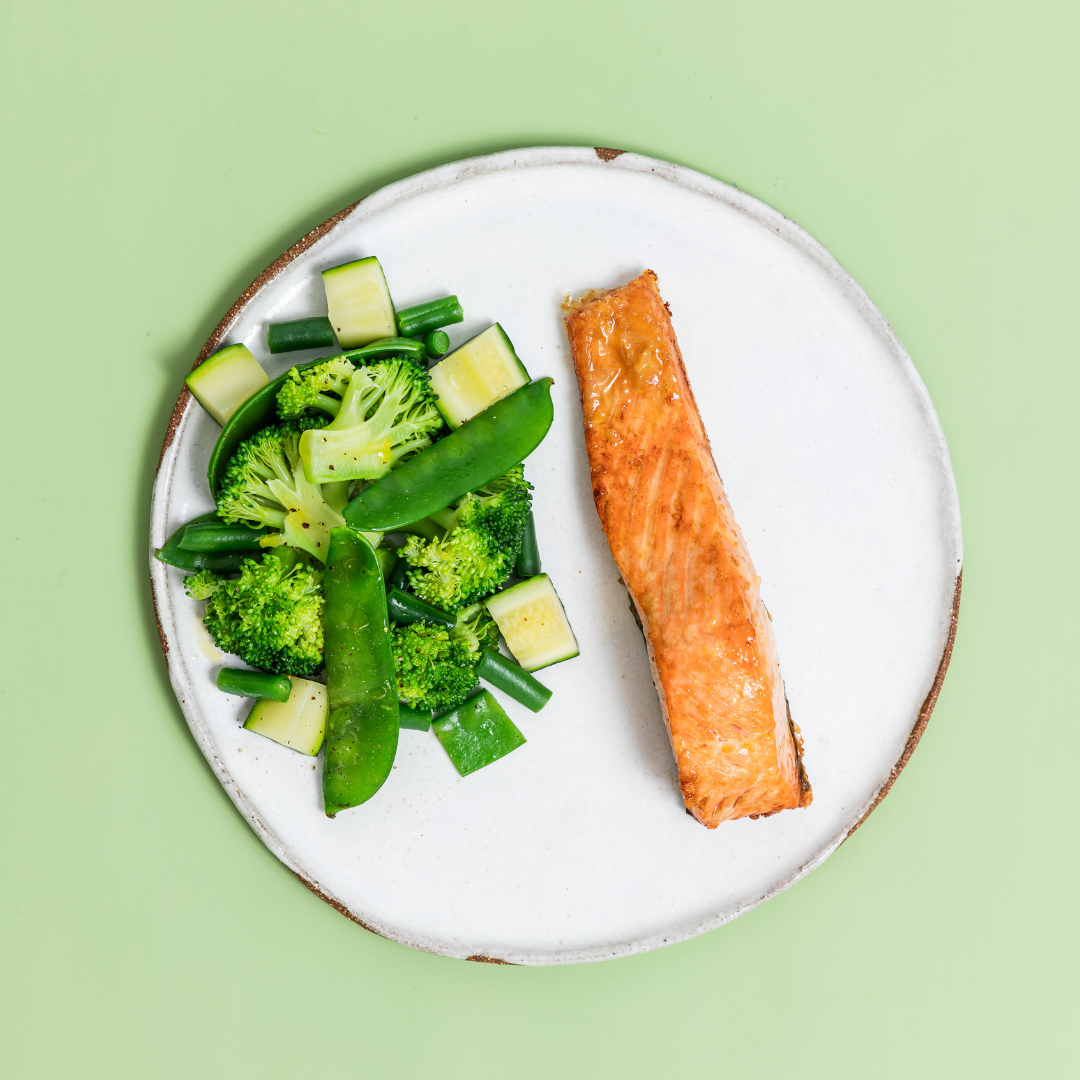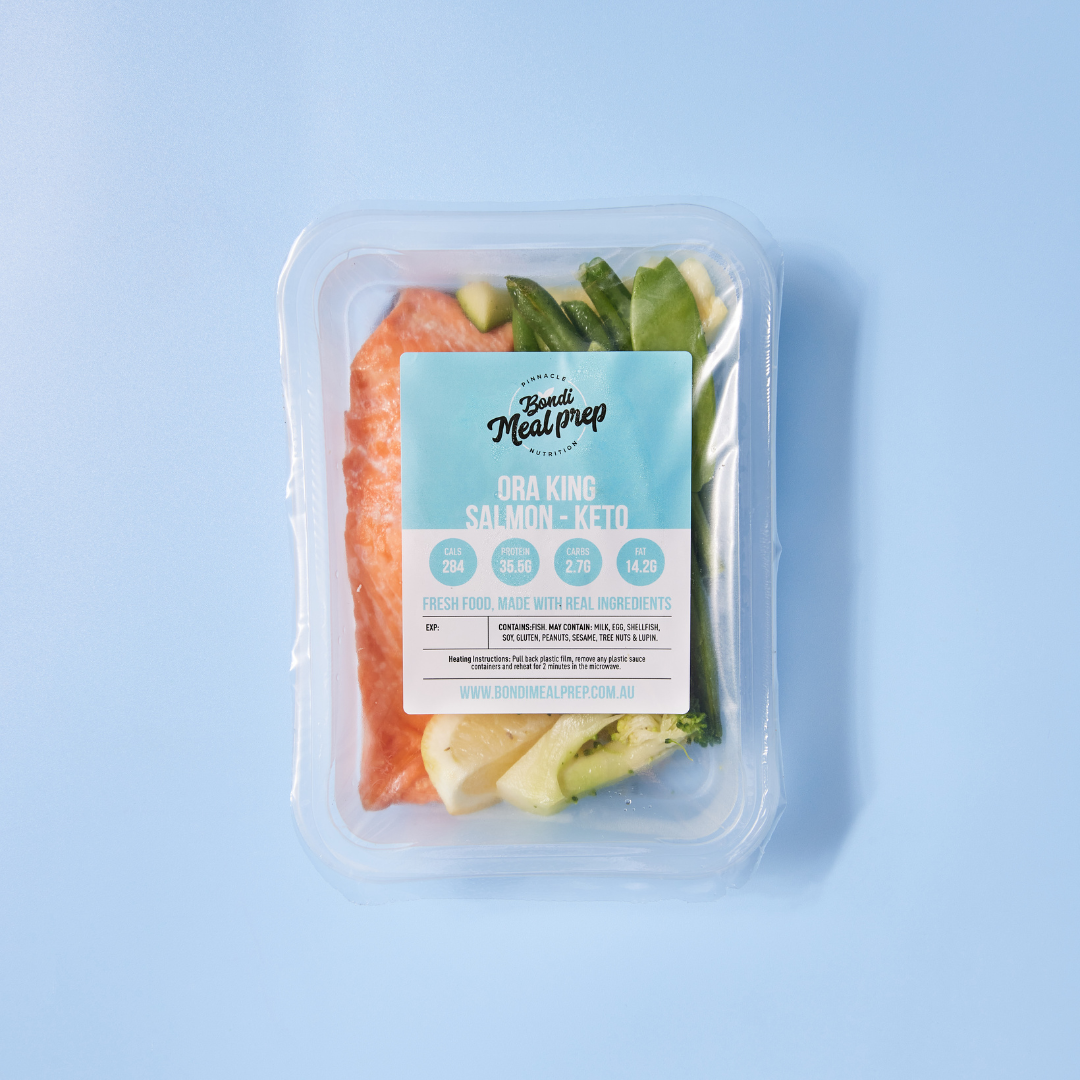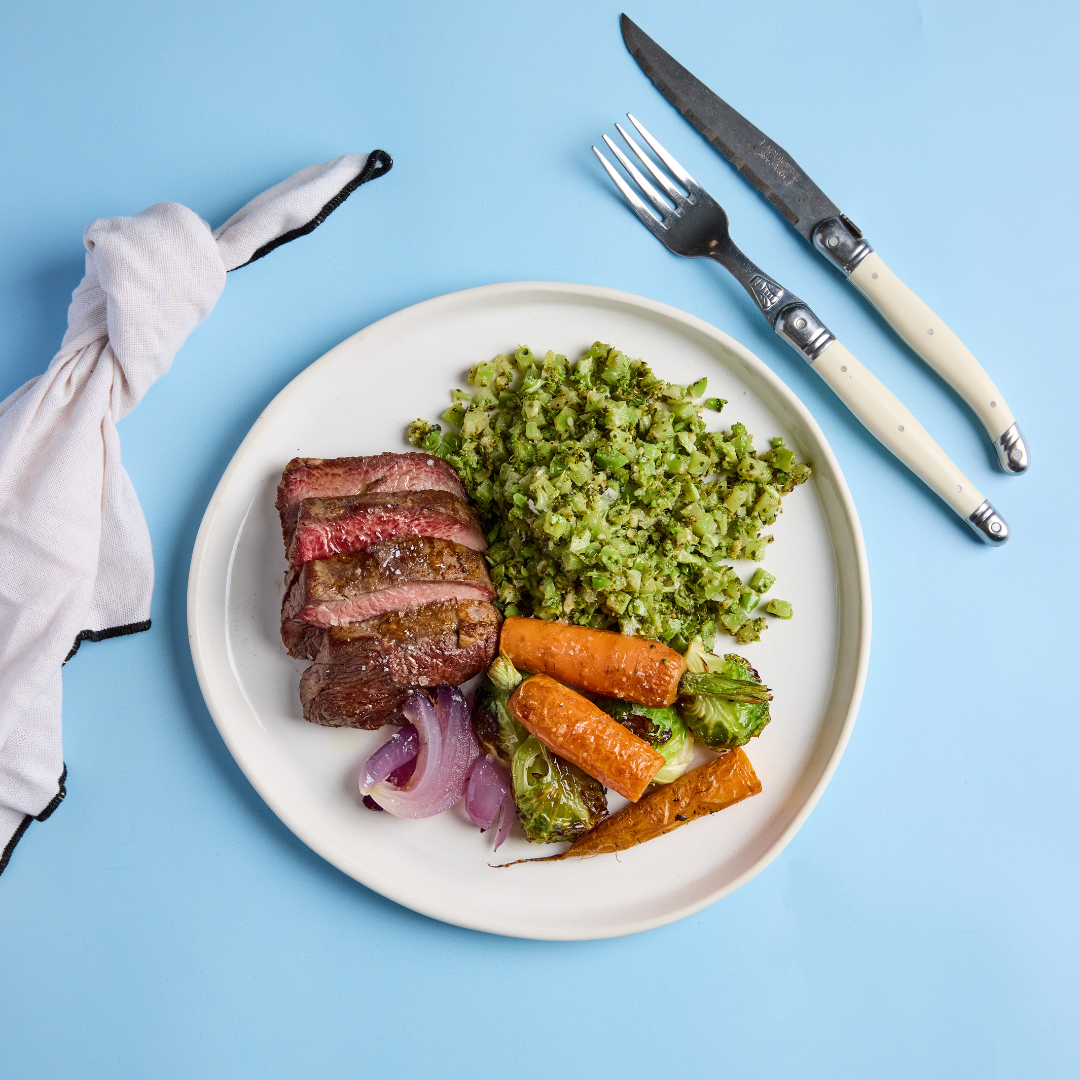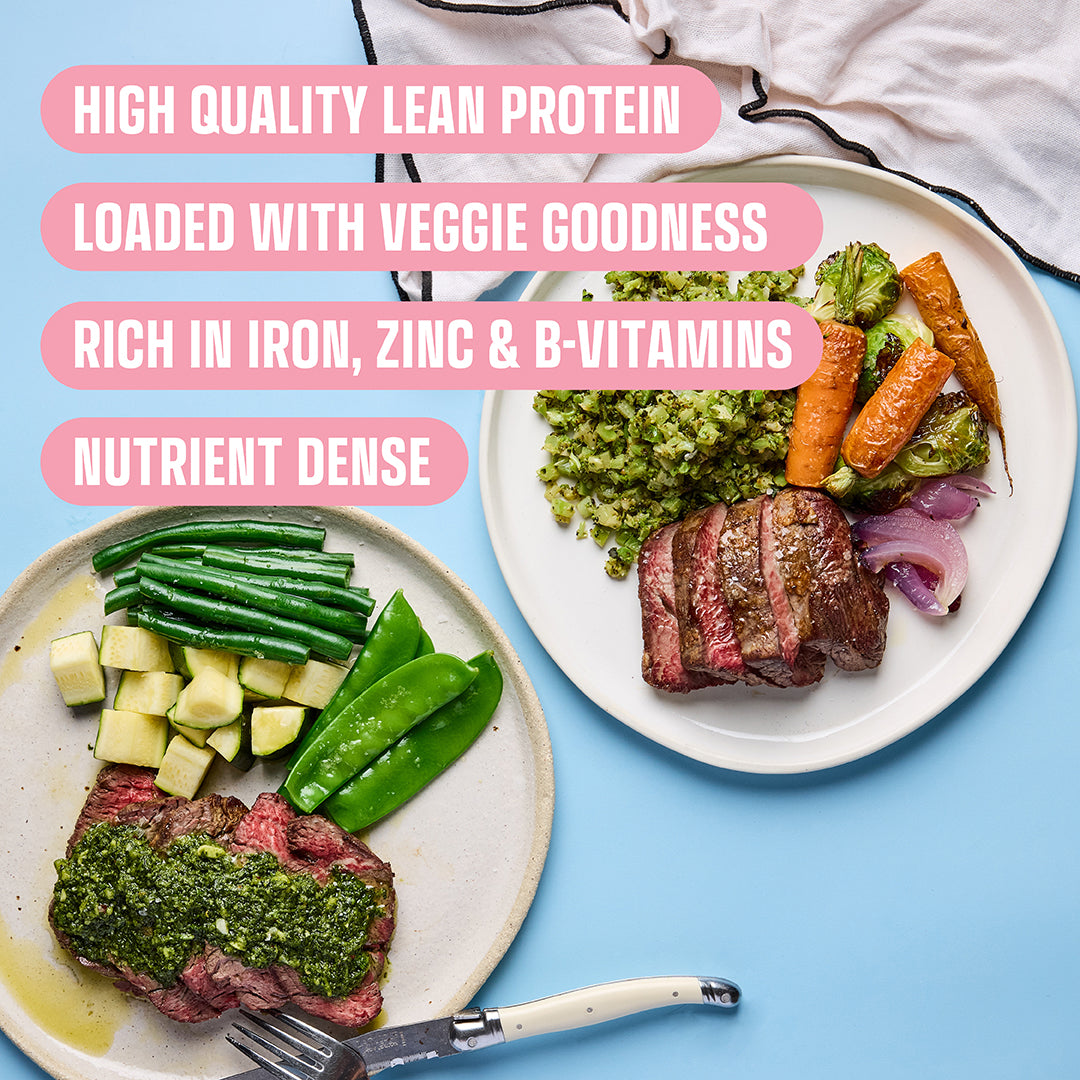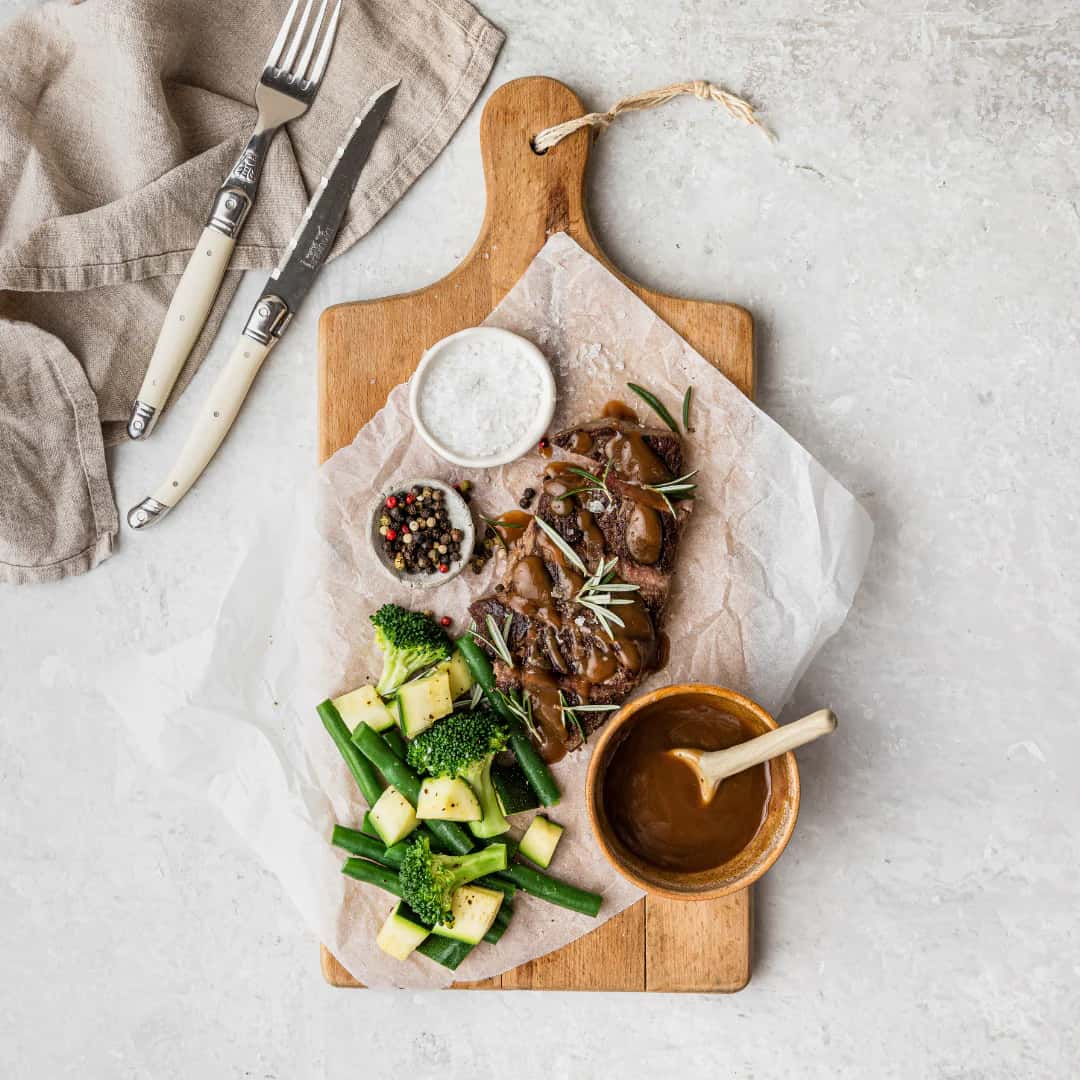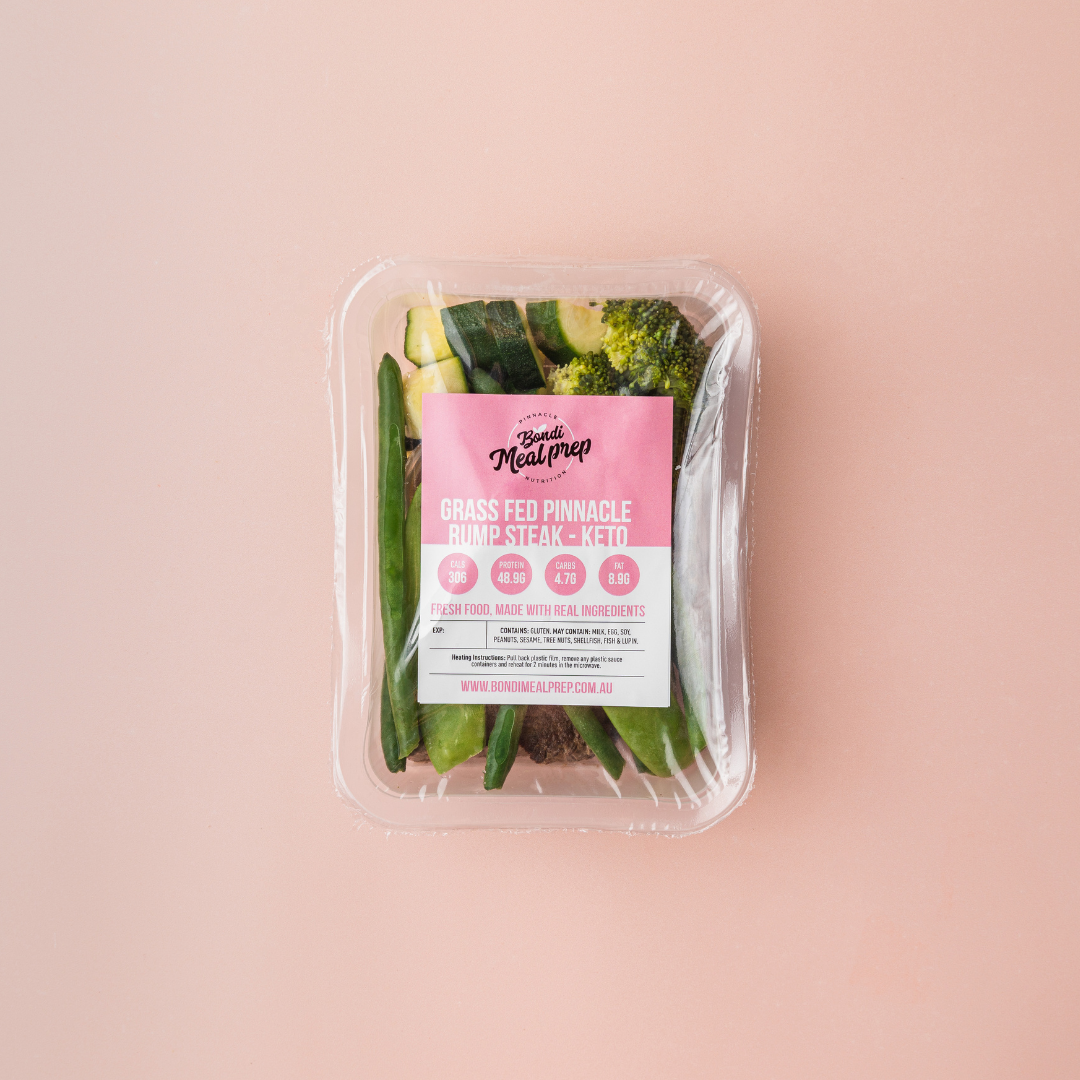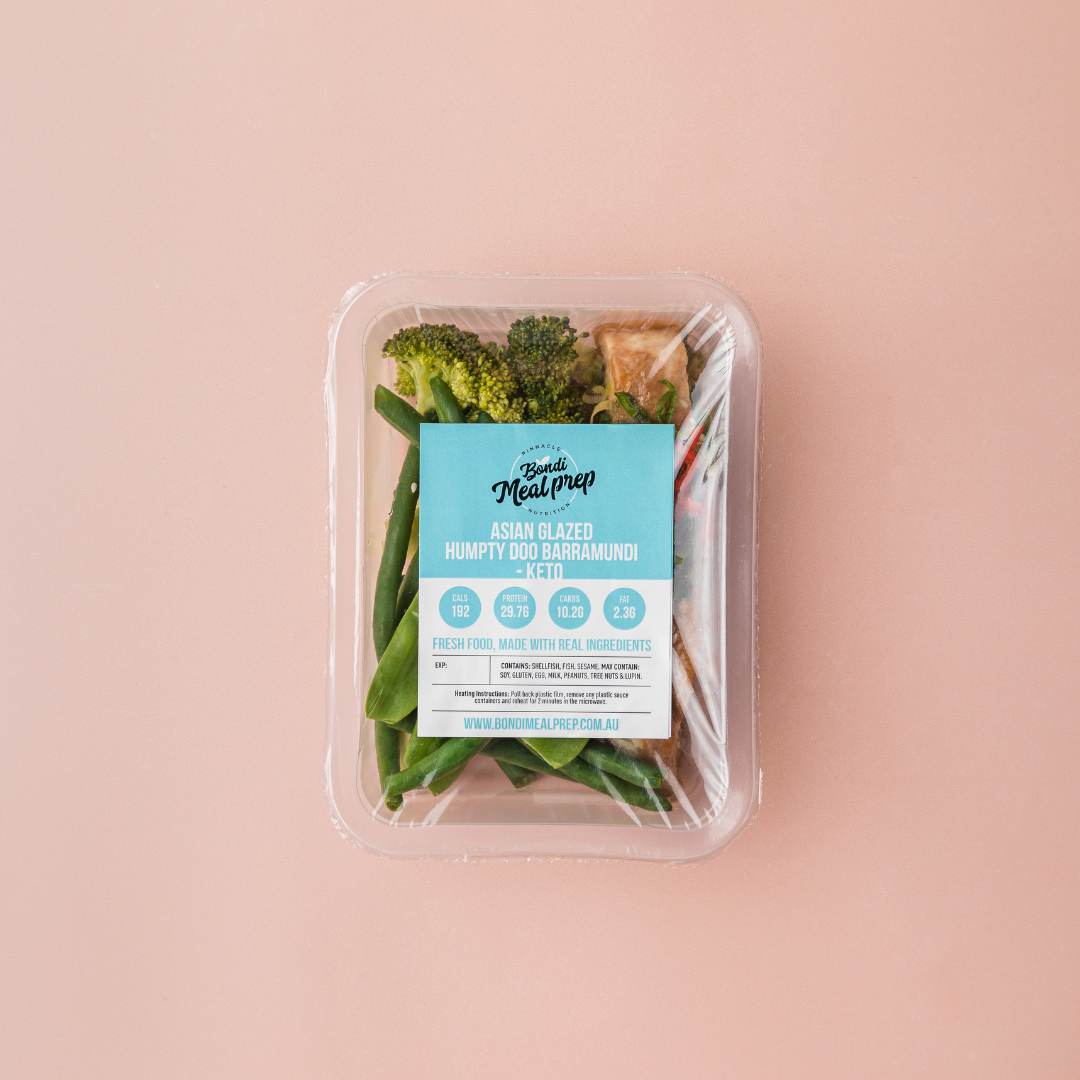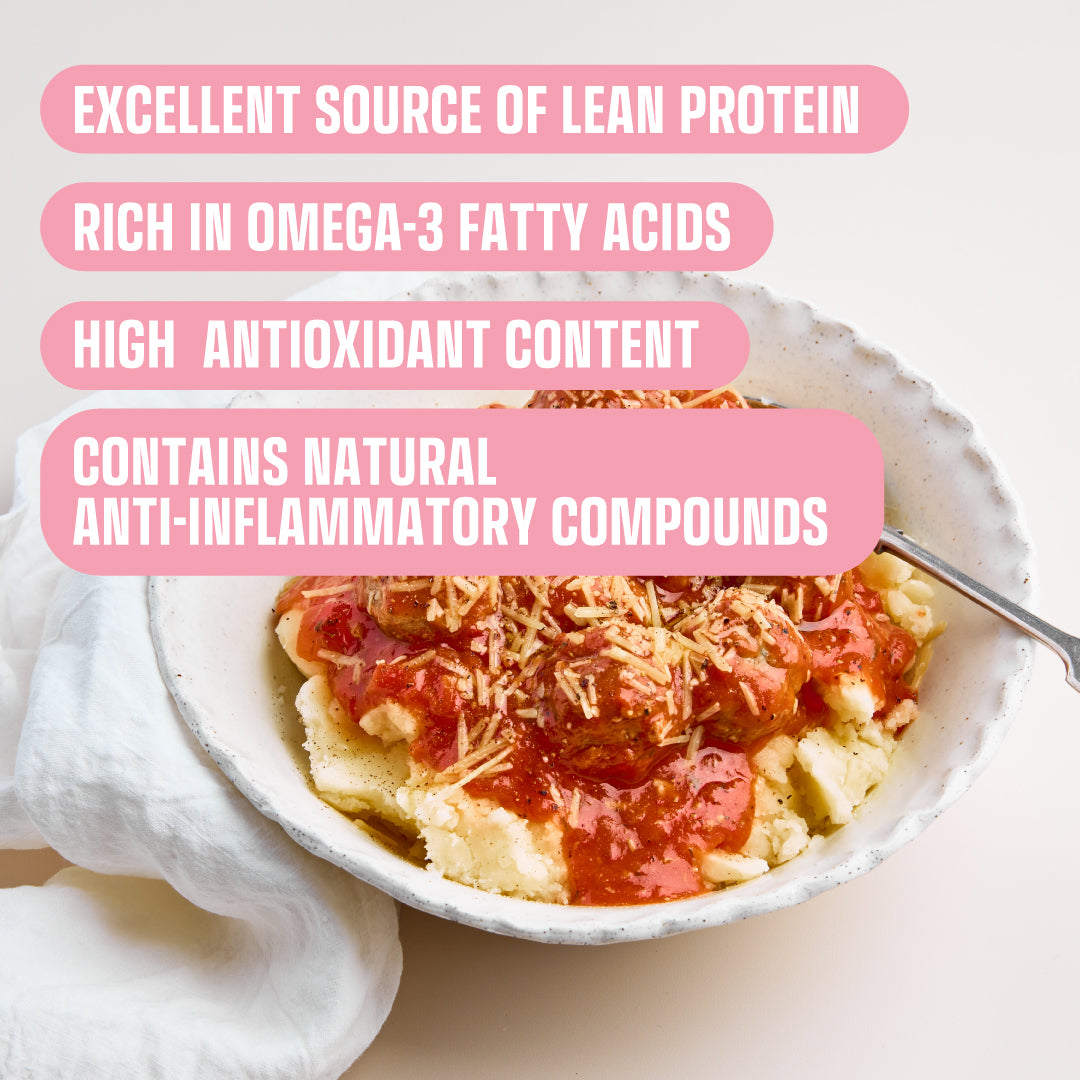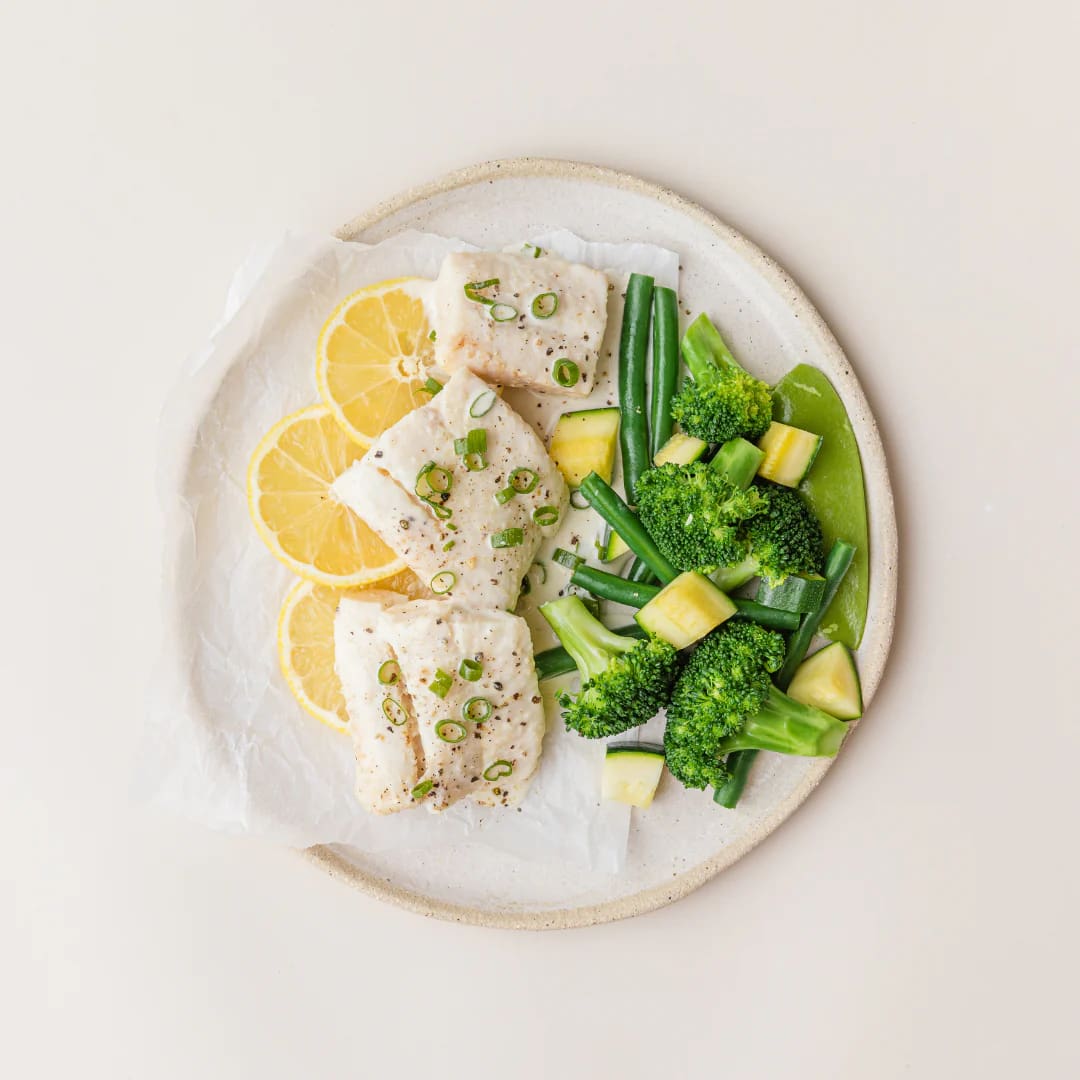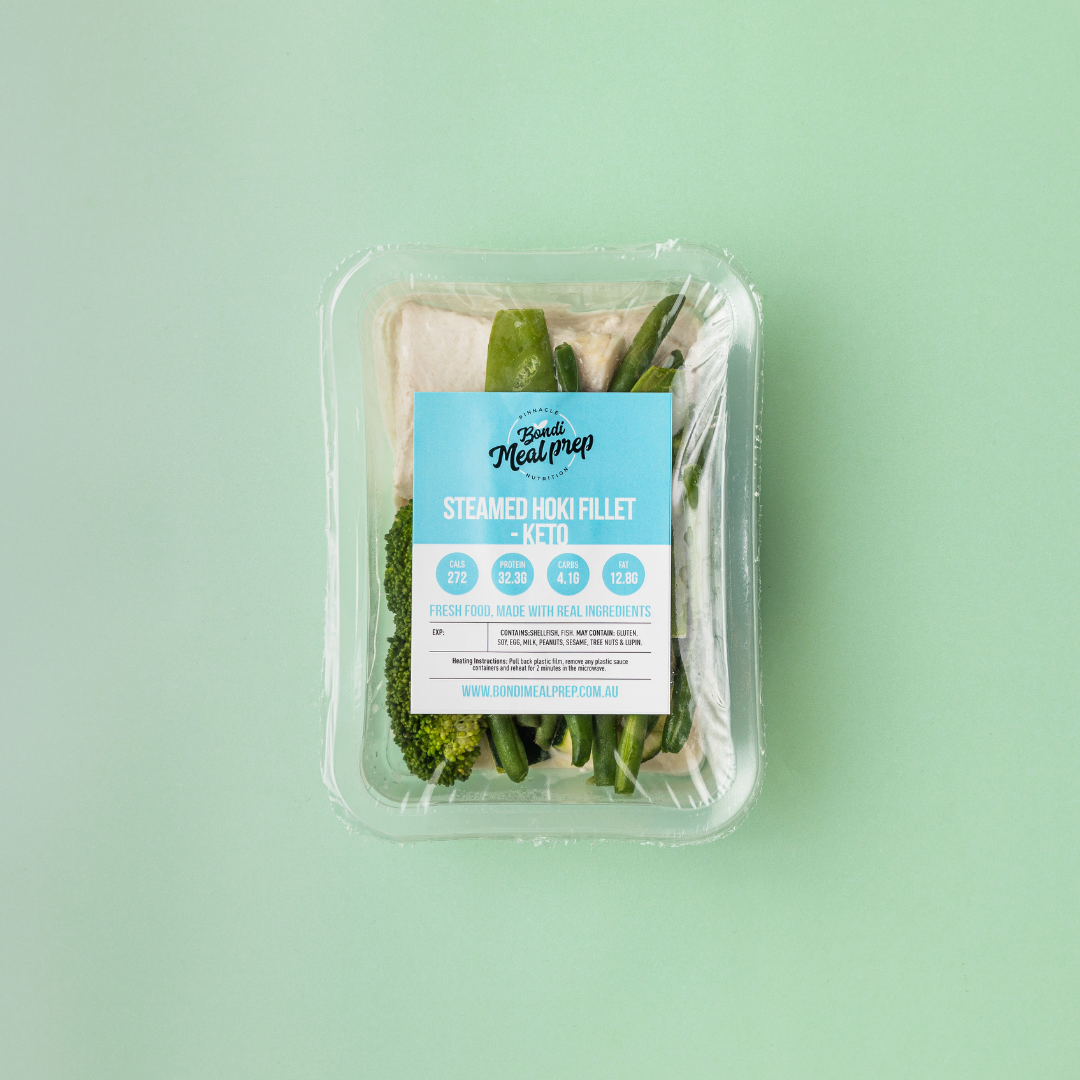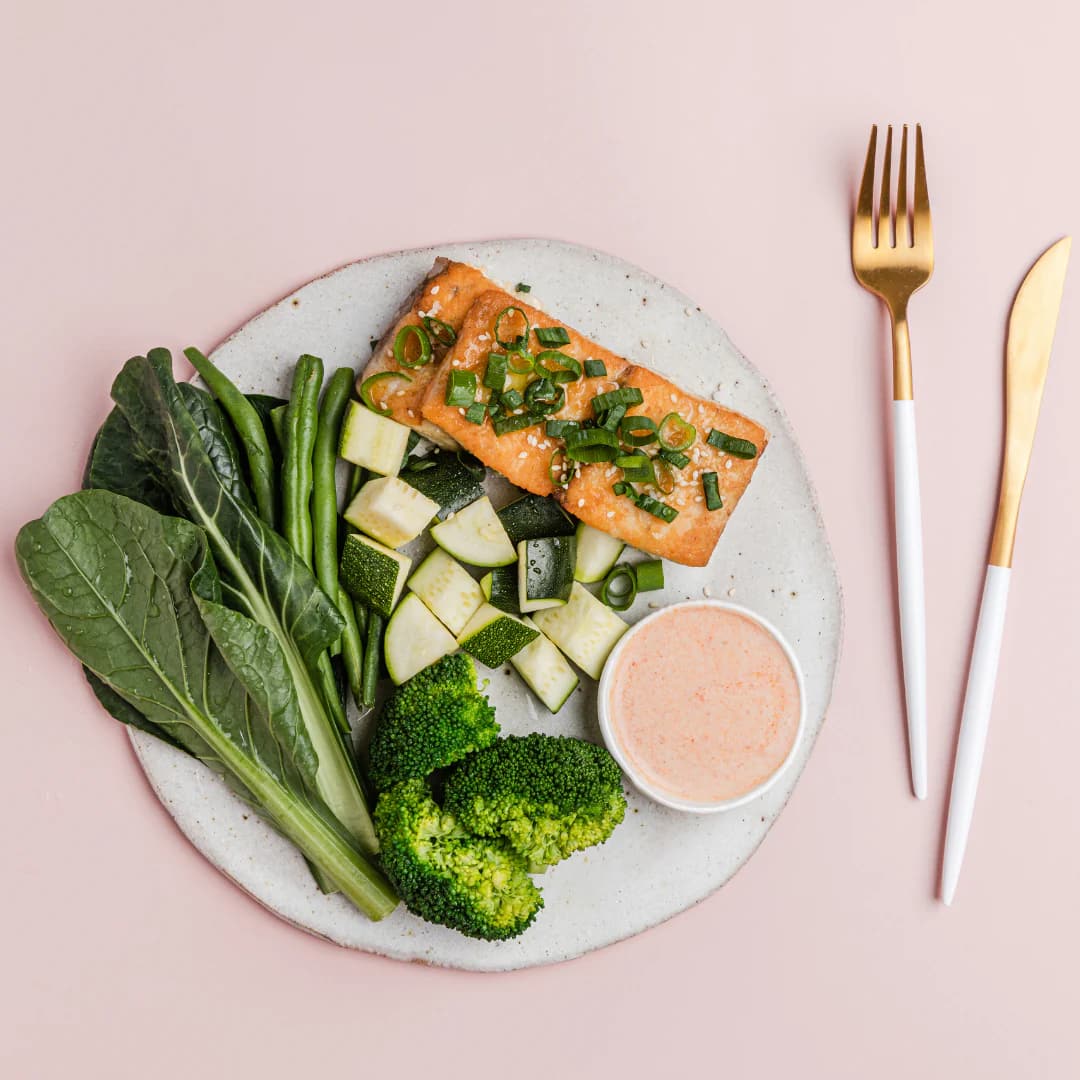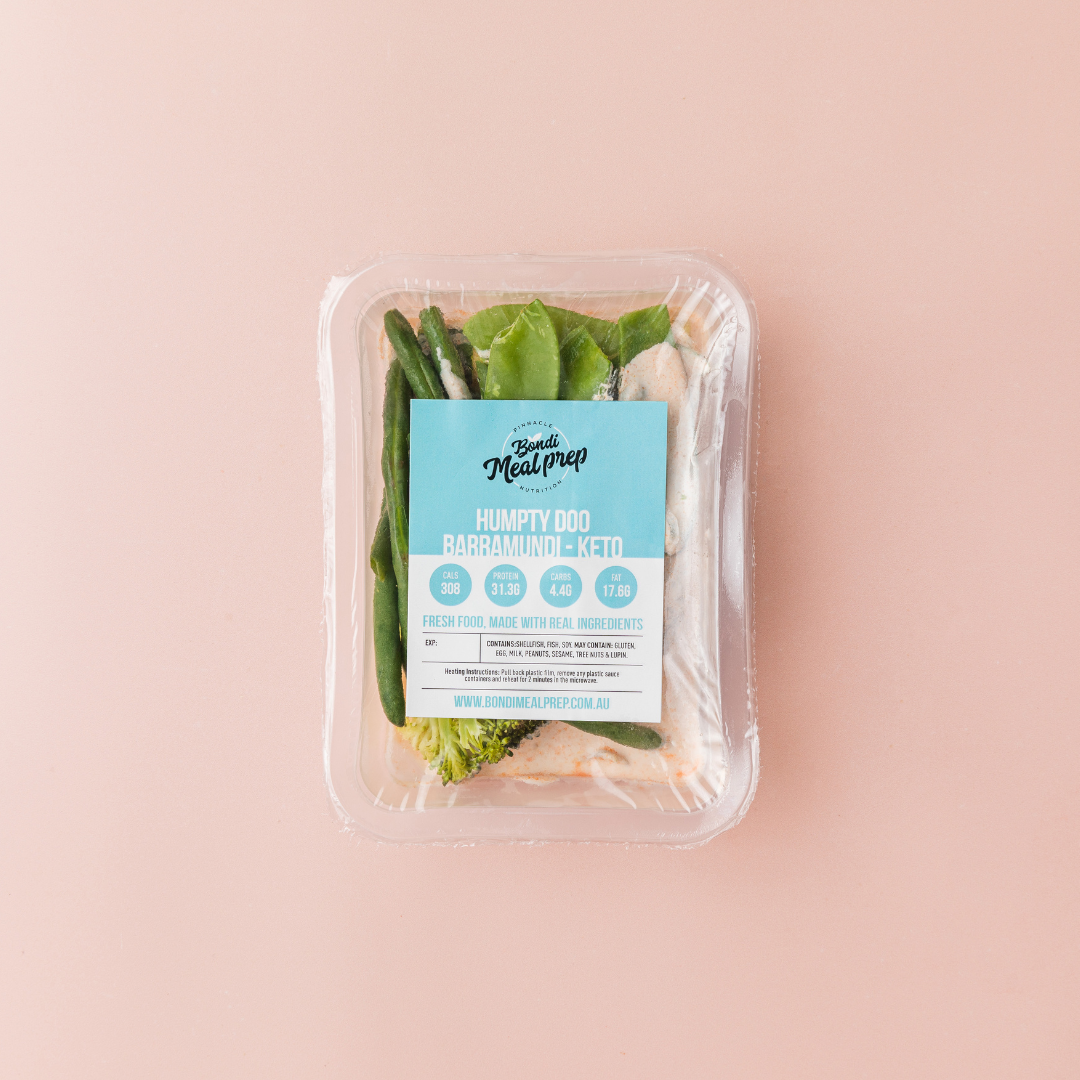Keto and paleo are two diets that often get mentioned in the same breath, but they’re not as interchangeable as they seem. Each has its own rules, benefits, and challenges. Choosing the right diet for you will depend on your lifestyle and goals. This guide breaks down the most important differences so you can make an informed decision (and stick with it!).
Key Takeaways
-
Keto and paleo are two of the most popular diets today, and while they share some similarities, their rules and results are quite different.
-
The paleo diet prioritises whole foods and cutting out grains, legumes, dairy, and processed foods to ensure food quality and balance.
-
The keto diet is built around high fat, moderate protein, and very low carbohydrates to push your body into a fat-burning state called ketosis.
-
Beyond nutritional science, both diets affect day-to-day life in terms of energy levels, cravings, social situations, and the time required to prep meals.
-
Bondi Meal Prep makes both keto and paleo diets more achievable by offering meals that are nutritionally balanced and ready to eat in minutes.
Overcoming the Confusion Around Diets
If you’re reading this guide, chances are you’ve spent time sifting through more than a few articles about the best diet for weight loss, energy, or long-term health.
Maybe you’ve tried a diet before, only to feel frustrated by the lack of variety or disappointed when the results didn’t last. Perhaps you’ve heard friends or family rave about the keto diet or the paleo diet. Both of these diets have millions of passionate supporters, mostly because they have the potential to deliver real results.
But keto and paleo diets aren’t the same, and figuring out which one suits your lifestyle and goals isn’t always easy. That’s why Bondi Meal Prep’s experts have created this guide. We'll explain the differences between paleo and keto, highlight the pros and cons, and share the real-life experiences of people who have committed to a new way of eating.
By the end, you won’t just know the biggest differences between the two diets. You’ll have the confidence to choose the one that’s right for you. And after we've introduced you to Bondi Meal Prep’s nutritionist-backed meals, you’ll know just how simple it can be to stay consistent, enjoy real flavour, and achieve results without the stress of planning and prepping every last bite.
What is the Paleo Diet?
The paleo diet, sometimes called the paleolithic, caveman, or stone age diet, takes its cues from the way our hunter–gatherer ancestors are thought to have eaten. The idea is simple: stick to whole, unprocessed foods and cut out modern additions like grains, legumes, dairy, and refined products.
That means plenty of fresh vegetables, grass-fed meats, fish, nuts, seeds, and paleo-friendly staples such as sweet potatoes and leafy greens. It’s less about tracking exact macronutrient ratios and more about focusing on the quality of what makes its way onto your plate.
People who follow paleo often say this “back to basics” style of eating helps them lose weight, feel healthier, and lower their risk of modern lifestyle diseases. By avoiding refined sugar, grains, and dairy, the diet is designed to calm inflammation, steady blood sugar, and support overall well-being.
What is the Keto Diet?
The ketogenic diet, or keto for short, is built around eating a lot of fat, a moderate amount of protein, and very few carbohydrates. The aim is to nudge your body into a state called ketosis, where it switches from burning carbs to burning fat stores for energy.
A typical keto plate might break down like this:
-
70–75% fat from sources like olive oil, avocado oil, coconut oil, nuts, or animal fats
-
20–25% protein from meat, eggs, and seafood
-
5–10% carbohydrates, mostly from low-carb vegetables
Because the diet keeps carbs so low, your body relies on fat for fuel. For many people, this means faster weight loss, steadier blood sugar, and better insulin sensitivity. Some followers also report feeling fewer afternoon energy crashes and greater mental focus once their body adjusts to burning fat instead of carbs.
Paleo and Keto Diets: Key Differences at a Glance
Both paleo and keto diets focus on eliminating processed foods and emphasising whole foods, but their goals and rules are different.
Here’s a comparison table that makes it easy to see the key differences and similarities at a glance. It highlights the philosophy behind each diet, what you can and can’t eat, and the type of results you typically see.
|
Aspect |
Paleo Diet |
Keto Diet |
|
Philosophy |
Mimics the food groups of paleolithic era hunter-gatherers |
Achieve ketosis by lowering carbohydrate intake |
|
Macronutrient Ratios |
Flexible, focus on food quality |
Strict, high fat, moderate protein, extremely low carbs |
|
Allowed Foods |
Whole foods, paleo-friendly foods, vegetables, lean meats, nuts, seeds, fruit, sweet potatoes |
High-fat foods like cheese, meat, eggs, oils, nuts, and low-carb vegetables |
|
Restricted Foods |
Grains, legumes, dairy, processed sugar, and refined sugar |
Grains, legumes, most fruits, starchy vegetables, and sugary foods and drinks |
|
Primary Goal |
Overall health and balance through food quality |
Fat loss and blood sugar control through carb restriction |
|
Flexibility |
More flexible and forgiving for social eating |
More restrictive but highly structured |
What Your Plate Looks Like Day to Day
If you’re considering the paleo diet, expect to fill your plate with vegetables, high-quality proteins, and healthy fats from nuts and oils. For example, a typical dinner might be grilled salmon with roasted sweet potatoes and leafy greens.
On the ketogenic diet, the same dinner might swap the sweet potatoes for creamy cauliflower mash cooked with olive oil or butter. The focus shifts toward hitting macronutrient ratios, particularly reducing carbs to an extremely low level (for a clearer understanding of what this looks like, check out our super simple 7-day keto meal plan).
Although both diets share the goal of avoiding processed sugar and refined carbs, the everyday food choices that go into following each diet will look slightly different.
Weight Loss, Blood Sugar, and Other Health Benefits
Both diets can lead to weight loss, though the mechanisms differ. Paleo helps by cutting out refined sugar and processed foods, naturally lowering total calories and improving food quality. Keto achieves weight loss by forcing your body to burn stored fat as fuel.
Research into the keto diet and paleo diet suggests both approaches may support better blood sugar control and improved insulin sensitivity, which is helpful for people at risk of diabetes.
Supporters of the paleo and keto diets also report potential health benefits, like reduced blood pressure, lower risk of heart disease, and improved energy levels.
It's important to understand that results will always vary from person to person. What matters most isn’t just the theory behind each diet, but how it fits into your daily life.
The foods you enjoy, the eating habits you can stick with, and the daily routines you can realistically sustain will determine if paleo or keto is the better long-term choice for your overall health.
The Realities of Meal Prepping on Paleo vs Keto
This is the stage where theory turns into practice. All diet guidelines sound easy enough on paper. However, the real test is how much time and energy you can commit to meal planning and prepping each week.
-
Paleo Diet Prep: Shopping often involves sourcing quality meats, lots of vegetables, nuts, seeds, and paleo-friendly foods. Luckily, most of these ingredients can be readily found in a decent-sized supermarket at reasonable prices. Prepping means chopping vegetables, roasting proteins, and often cooking from scratch. It’s healthy, but it can be time-consuming.
-
Keto Diet Prep: Keto meal prepping requires not only finding quality proteins and vegetables, but also ensuring the right balance of fats. You may need to cook with coconut oil, avocado oil, or olive oil, and prepare high-fat snacks in advance. Carb restriction means you’ll spend extra time checking labels and tracking daily calories. The emphasis on quality ingredients can make the cost of keto a little higher than that of other diets.
For someone with a busy lifestyle, both diets can feel like a big commitment. After a long day, it’s easy to skip the chopping board and reach for processed foods instead (step away from the microwave pie!).
That’s when having a Bondi Meal Prep option tucked away in the fridge can help you stay on track. With our ready-made keto and paleo meals, you don’t have to worry about shopping, chopping, or counting macros. Our balanced, chef-prepared meals make it easy to stay focused in those moments when the temptation to slack creeps in.
How Do People Actually Feel on These Diets?
The most important aspect of any diet is how it feels in day-to-day life. Everyone’s journey looks a little different, but here’s a glimpse into what people experience when following paleo or keto diets.
-
On Paleo: Many people say they feel lighter, less bloated, and more energetic after cutting out grains, dairy, and processed foods. The abundance of vegetables and whole foods helps them feel nourished, though the adjustment can take time. Eliminating food groups also means extra planning in the beginning, especially in social situations.
“I'm a university lecturer. I switched to paleo because I was constantly dealing with energy slumps during afternoon teaching. It wasn’t a quick fix, and there was definitely a period of adjustment while my body got used to the new way of eating. I also found I had to put more effort into planning and preparing meals, which took up more time than I was used to. But now it feels second nature. My energy has stabilised, and I don’t get those crashes anymore. Because I know how good they'll make me feel, I actually enjoy putting my meals together.” – Matilda
-
On Keto: Early weight loss and more stable blood sugar are common, along with fewer energy crashes during the day. Some people do experience the “keto flu” during the first week or two, and the high-fat focus can feel challenging to maintain long-term. Eating out can also be tricky when carbs are so restricted.
“I switched to keto because I wanted to stay lean for MMA and have more stable energy. During the day, I often feel hungry (sometimes even a bit hangry!), but I’ve learned to channel that into work. It actually makes me more productive. The big difference for me is that I don’t get the afternoon slump I used to when I ate carbs. My energy feels steady, I can get through long workdays and tough training sessions without crashing, and I never feel bloated. Overall, my body responds really well to keto, as long as I can handle the cravings.” – Richard
Your personal experience will depend on factors like how sensitive you are to carbohydrates, how much time you realistically have for meal prepping, and how comfortable you are with eliminating entire food groups.
What can be learned from Matilda and Richard’s experiences is that it’s important to stick with a diet to enjoy long-term results. This might mean being patient and waiting for any initial teething problems to pass. That said, don’t be afraid to make adjustments to what you’re eating if things don’t feel right.
Can You Combine Keto and Paleo?
Some people wonder if it’s possible to blend the two diets rather than choosing one. In fact, you can. This hybrid approach is often called “keto paleo”, and it combines the high-fat, carb-restricted approach of keto with the whole-foods philosophy of paleo.
In practice, it means cutting out grains, legumes, and dairy while also keeping carbohydrate intake low. The benefit is that you’re eating clean, nutrient-dense foods while still achieving a state of ketosis. The challenge is that it can feel quite restrictive, since you’re following the strictest parts of both diets at the same time.
If you’re drawn to the structure of keto but also value the food quality of paleo, this combination might be worth exploring. However, keep in mind that it requires careful planning and a lot of dedication. If you've never tried either diet before, jumping on board with both at the same time might be overambitious.
Which Diet is Right for You?
When comparing keto and paleo diets, there’s no single winner. Each comes with potential health benefits and challenges, and the better choice depends on your personal goals and your willingness to adapt to a new way of eating.
The paleo diet might suit you if you want to prioritise food quality, flexibility, and the enjoyment of fruits and vegetables, while also removing processed sugar and dairy. It offers more freedom in social settings and is often easier to maintain as a long-term lifestyle.
The keto diet, on the other hand, might appeal if you’re motivated by structure, clear macronutrient ratios, and want to see faster weight loss results. It can be effective for stabilising blood sugar and supporting fat loss, but it requires discipline and can, for some people at least, feel restrictive in the long run.
Both diets share important common ground. They cut out processed foods, emphasise whole foods, and encourage a healthier relationship with what you eat.
Whichever path you choose, you’ll be making a positive step toward nourishing your body, supporting your health, and building a more mindful connection with what you put into your body each day.
Bondi Meal Prep: More Nutrients on Your Plate, Less Stress in Your Day
Ultimately, choosing between keto and paleo isn’t about chasing the latest diet trends. It’s about finding a sustainable way to eat that supports your health, lifestyle, and goals.
If you’ve struggled with complicated shopping lists, long hours in the kitchen, or the temptation of processed foods, you’re not the only one. Sticking to either of these diets takes effort, but you don’t have to do it the hard way.
Bondi Meal Prep's dedicated keto menu is chef-prepared with the right balance of healthy fats, proteins, and carbs. It keeps you out of the kitchen and your diet on track. Plus, every meal is made from whole, unrefined ingredients. Our delicious meals aren't just convenient, they're also a natural fit for a paleo lifestyle.
With Bondi Meal Prep, you can enjoy the health benefits of these diets without the unwanted stress of planning, prepping, or cooking. That means more time for the things that matter in life and more energy to feel your best.


